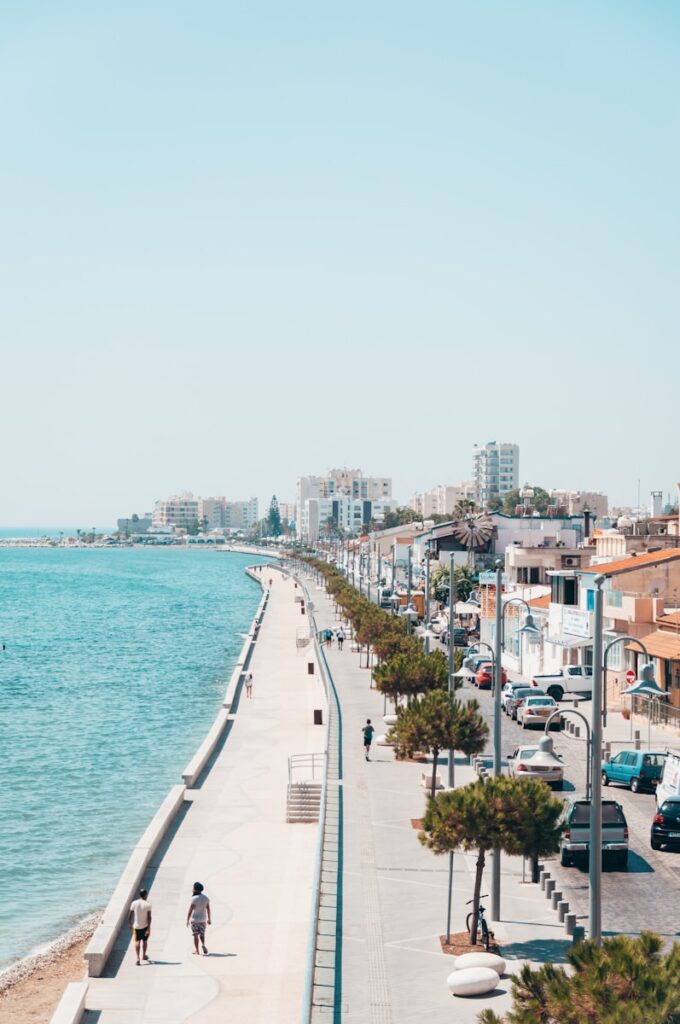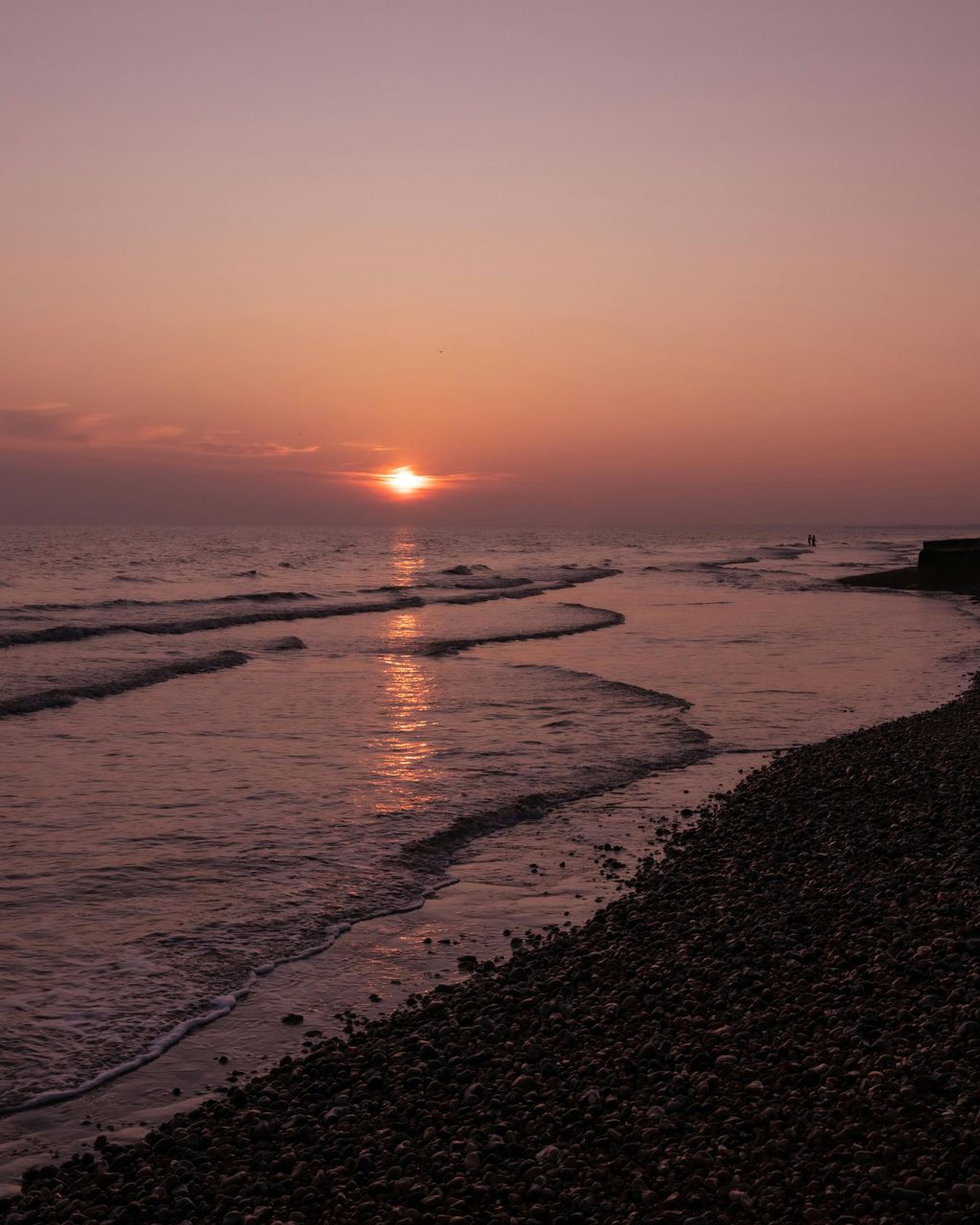
For many, the thought of telling off the boss, storming out in a blaze of glory, and moving to a sun-drenched European beach sounds like a far-fetched fantasy. We’re often tethered to the reality of paychecks and bills, convinced that a comfortable middle-class lifestyle is inextricably linked to a specific American zip code. But what if that wasn’t the only reality? What if the notion that living on a shoestring budget only applies to places like Asia or Latin America was simply… wrong?
It’s time to think again. The European dream, once seemingly reserved for the ultra-wealthy or the perpetually backpacking student, is now astonishingly accessible. You can absolutely live in Europe for $2,000 a month—and in many places, you’ll discover not just a comfortable existence, but potentially a richer, more fulfilling life than you’re experiencing right now.
This isn’t just a whisper among adventurous travelers; it’s a growing movement made possible by something called “geoarbitrage.” This isn’t a complex financial maneuver, but rather a clever strategy of leveraging differences in currency value and the cost of living across various countries. It means that whether you’re a retiree living on Social Security, a dynamic digital nomad, or an experienced expat, the options to embrace the European dream without draining your bank account are more abundant than ever before.

While the siren song of big capital cities or tourist-heavy hotspots might indeed consume a Social Security check—and then some—this isn’t universally true across the continent. The secret lies in looking beyond the obvious. By heading farther east across the Continent or exploring the less well-known, charming regions of Western and Southern Europe, the good life becomes fully accessible, even for those working with a tighter budget.
Central and Eastern Europe, for instance, stand out with some of the best quality-of-life-to-cost ratios available. These aren’t obscure, undeveloped corners; they boast reliable infrastructure, comprehensive public transportation networks, remarkably low crime rates, and affordable, high-quality health care. These lesser-visited countries are just as well-appointed as the traditional European favorites, offering a level of comfort and convenience that might surprise many. An added bonus? Securing EU residency in these nations means that the entirety of Europe is, quite literally, at your fingertips.
Even in Western Europe, where costs are generally perceived to be higher, delightful little villages and rural regions — even in sought-after countries like Portugal, Italy, Spain, and France — still offer an enviable lifestyle at prices that won’t break the bank. A key to unlocking these local gems and significantly slashing monthly bills often lies in a willingness to immerse oneself in the local culture, particularly by learning a new language. This small investment in time and effort can yield immense financial and social dividends.
So, if you’ve been dreaming of warm breezes gently drifting through your window, envisioning morning strolls by the serene sea, or picturing yourself meandering through historic, cobblestone town centers, perhaps even sipping wine and enjoying a breathtaking view from your own balcony, don’t let budget concerns dictate your thinking. The dream of a good life in Europe on a tight budget is not just a pipe dream; it’s a tangible reality with numerous viable options available right now, promising comfort and charm without unnecessary sacrifices.
Read more about: Beyond Convenience: 8 Bills Financial Experts Say You Should Never Autopay
Before we dive into specific locations, it’s crucial to address some common misconceptions many Americans harbor about living abroad. Far too often, people believe it’s only safe for men, or exclusively suitable for young, single individuals, or even impractical for families. These notions are simply not true. The expat community is far more diverse and inclusive than these outdated stereotypes suggest, showcasing the incredible adaptability and openness of those who choose to venture beyond their home borders.
According to InterNations, a significant 48% of U.S. expats are women, challenging the idea that it’s primarily a male pursuit. Furthermore, the average age of U.S. expats stands at 45.9 years old, proving it’s certainly not just for the young. And for those with families, the statistics are equally encouraging: over half (55%) of U.S. expats are either married or in a long-term relationship, with many bringing their children along for the international adventure. Many American, Canadian, and British expats know others who have children living abroad with them, indicating a strong family presence in these international communities.
When considering a move abroad, several key factors influence the comfort and ease of living. These considerations are vital for anyone contemplating such a significant life change, providing a snapshot of what to expect and how to plan effectively. Understanding these elements can help prospective expats make informed decisions and set realistic expectations for their new lives overseas.
First, there’s the **Cost of Living**. This broad category includes average rent figures for both a one-bedroom apartment in desirable city-center neighborhoods and a three-bedroom house located outside city-center areas. It’s important to note that these numbers can vary wildly based on the specific city, neighborhood, and the property itself. While these are average rents based on Numbeo’s figures, it’s always possible to find lower-cost or more upscale homes to suit individual preferences and budgets. Additionally, this data encompasses typical utility expenses (electricity, heating, cooling, water, garbage), internet costs, entertainment like dinner out at a midrange restaurant for two, and even the price of a movie ticket. These figures collectively offer a comprehensive snapshot of how living costs in these countries compare to the U.S., providing a concrete basis for budget planning.
Read more about: Social Security at 90: Debunking 14 Stubborn Myths That Could Jeopardize Your Retirement

Then, there’s **Health Care**. International health insurance rates, much like in the U.S., can vary wildly. The health care systems within these countries are also vastly different, with many offering excellent public health care options that can significantly reduce personal medical expenses. To provide a comparative measure, per-capita spending on health care, as reported by the Organisation for Economic Co-operation and Development (OECD), is often used. For a striking reference point, the U.S. averages $12,318 per person annually, a figure that highlights the potential savings available in countries with more affordable healthcare systems.
**Crime and Safety** are paramount concerns for anyone moving to a new country. While many might instinctively associate certain regions with higher crime rates based on media portrayals, reality often paints a different picture. For example, Abu Dhabi is currently the safest city in the world, according to Numbeo’s global crime index, despite being in the Middle East. For a country-by-country comparison, the Global Peace Index (GPI) scores are utilized, where a lower score indicates better safety. The U.S. scores 2.44, which is notably worse than most of the countries on this list, offering a compelling perspective on global safety rankings.
Finally, **Taxes** are a crucial consideration for American expats. The good news is that as an American expat, your first $112,000 of income (in 2022) is tax-free in the U.S. through the foreign earned income exclusion. However, it’s essential to understand that in some countries, you may still be required to pay local taxes on that income. Conversely, other countries do not charge taxes on income earned from an employer outside their borders, offering a significant financial advantage for digital nomads or remote workers. This variation necessitates thorough research into the tax laws of any prospective new home.
Now, let’s embark on a fascinating journey through some of Europe’s most compelling, budget-friendly destinations, starting with a capital city that consistently punches above its weight in terms of value and vibrancy.
**Budapest, Hungary: Beauty On A Budget**
Read more about: UFC Forges Game-Changing $7.7 Billion Deal with Paramount and CBS, Ushering in a New Era of Accessibility for Fans and Reshaping Sports Media Rights

Budapest is arguably Europe’s best-value capital city, a true gem that delivers the culture and infrastructure found in the best of Western Europe, but at a mere fraction of the cost. With a cost range typically falling between $1,200 to $1,800 per month, it’s an incredibly attractive option for those seeking stylish city life without the exorbitant price tag. Its excellent public transit system is a major draw, making it easy to navigate the city without a car, and its central location provides exceptional access to the wider Central European region.
This city is a paradise for urban culture enthusiasts and expat professionals. When you take into account the high quality of life, its cosmopolitan feel, a thriving art and cafe culture, an exceptionally efficient public transport system, and surprisingly affordable housing, Budapest could easily be crowned the best “bang-for-your-buck” capital in Europe. Even in prime central neighborhoods, such as District VI or VII, it’s possible to find small apartments for less than $800. Factoring in utilities, groceries, health insurance, and entertainment, singles or couples can live remarkably well for under $1,800 a month.
Beyond its affordability, Budapest is remarkably safe and mostly flat, making it an ideal city for walking or biking. Its metro system rivals the best in the world, ensuring convenient and reliable transportation. As a cultural powerhouse, Budapest boasts an impressive array of museums, opera houses, galleries, and all the entertainment you’d expect from a first-class city, putting it fully on par with any other major European capital. Yet, it also possesses a unique character all its own.
The city is famous for its thermal baths, offering a relaxing and restorative experience, and its quirky ruin pubs, which are iconic to Budapest’s nightlife scene. A vibrant coffeehouse culture, diverse music venues, and a thriving LGBTQ+ scene attract visitors and residents from across the continent, contributing to its dynamic and welcoming atmosphere. Budapest truly feels like an open-air museum, with stunning architecture that, for many, rivals even that of Paris.
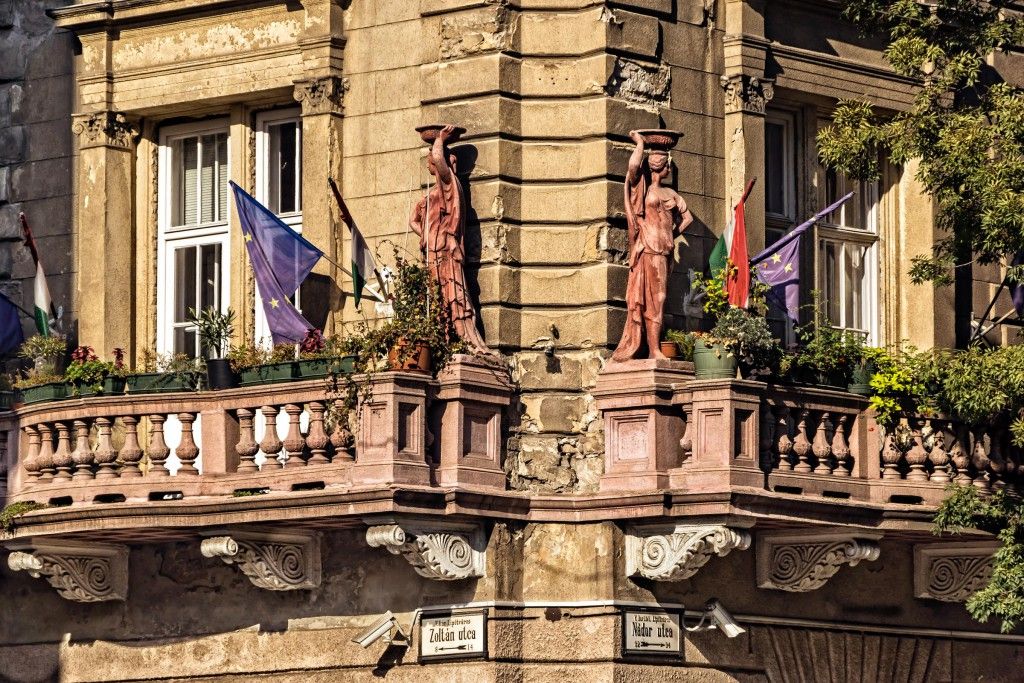
Digital nomads find Budapest particularly appealing due to its fast Wi-Fi and numerous co-working spaces, facilitating productive remote work. Retirees, on the other hand, greatly appreciate the affordable, high-quality health care and the slower pace of life found outside the bustling tourist core. While learning Hungarian might present a challenge, English is widely spoken, especially among the younger generation of locals, making integration smoother for expats.
Hungary also offers a low-cost residency pathway through long-stay visas, making it a viable long-term home for retirees or freelancers. In essence, Budapest provides cosmopolitan living, fantastic food, historic charm, and solid infrastructure, all without the steep price tag often associated with cities like Paris, Lisbon, or Barcelona.
**Greece: Affordable Aegean**
Greece, often celebrated for its whitewashed islands and legendary ancient ruins, is also one of Europe’s best-kept secrets for affordable living within the EU. With a cost range from $1,000 to $1,700 per month, it offers inexpensive housing, particularly when looking beyond over-saturated tourist favorites such as Santorini or Mykonos. Life on a Greek island or the mainland is easily affordable, with apartments or charming cottages—even those boasting sea views—typically renting for less than $800 a month. With careful research, a true gem could even be found for as little as $400.

Greece embodies the quintessential Mediterranean vibe: a warm, sunny climate year-round, a wonderfully relaxed pace of life, and an abundance of stunning beaches, dreamy islands, and even picturesque mountain regions. The waters are famously clear, blue, and remain warm throughout the year, inviting endless opportunities for outdoor enjoyment and relaxation. The country’s commitment to the Mediterranean Diet, rich in olive oil, fresh seafood, abundant vegetables, and whole grains, is not just a culinary delight but also a lifestyle proven to reduce health risks and promote weight loss, contributing to a truly healthy way of living.
Greek culture is deeply social, and the locals are renowned for being warm, welcoming, and genuinely eager to share their home with newcomers. It’s remarkably easy to find community here, whether connecting with fellow expats or integrating with the local population. Life in a village, for example, often revolves around the local taverna (restaurant), where people gather for hours in the evenings, engaging in lively chats with family and friends. The morning coffee ritual is similarly an ingrained institution, providing another avenue for expats to integrate into their new home and forge meaningful connections.
For remote workers, Greece offers a growing infrastructure, particularly in cities like Thessaloniki or on popular islands such as Crete. Internet access is generally good, fresh produce is incredibly cheap, and the overall lifestyle is outdoorsy and healthy, making it an ideal environment for those who prioritize well-being and a connection to nature. Furthermore, the country offers attractive tax incentives designed to attract foreign pensioners and professionals. This strategic approach is making Greece an increasingly viable long-term base for expats who seek a relaxed, low-cost European lifestyle that combines ancient history with modern convenience. From cozy island homes to historic inland villages, Greece truly offers some of the best places to live in Europe for under $2,000 a month.
**Cyprus: Mediterranean Without The Markup**
Read more about: Visions of 2100: How Striking Photography Reveals Our Climate-Altered Future and Inspires Urgent Action
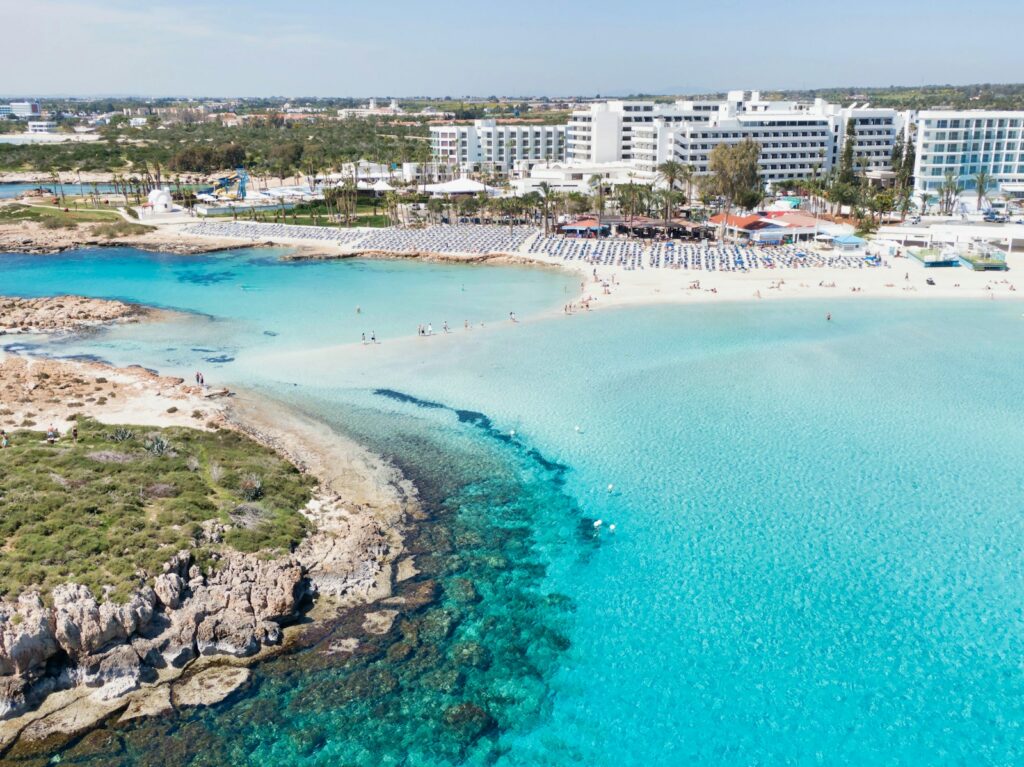
If the dream involves beachfront living on a budget, Cyprus stands out as one of the premier destinations where living comfortably on $2,000 a month or less is not just possible, but quite achievable. While perhaps somewhat unknown to Americans, British and other European visitors have been flocking to Cyprus’s beautiful shores for over a century, drawn by its charm and affordability. This island nation boasts modern infrastructure, appealing tax perks, and year-round sunshine, all at a fraction of the cost typically associated with other Mediterranean destinations.
As a member of the EU with strong historical ties to the UK, Cyprus is one of the few countries in the region where English is an official language. This linguistic accessibility is a significant reason why it remains a top choice in Europe for Americans considering a move abroad. It simplifies daily life, communication, and integration, making the transition much smoother for English-speaking expats.
Even in the larger cities like Larnaca, Paphos, or Limassol, rents for one-bedroom apartments generally fall within the $500 to $800 range, with a plentiful selection of options conveniently located near the coast. The cost of utilities and groceries in Cyprus is notably lower than in most of Western Europe. Additionally, given the island’s consistently warm climate, the need for heating is almost non-existent, and careful management of air conditioning usage can lead to significant savings. Healthcare services in Cyprus are both affordable and of high quality, providing peace of mind for residents.
Read more about: A Retirement Expert Reveals: 8 Global Havens That Outshine America for Your Golden Years
A slow-paced island lifestyle reigns supreme in Cyprus, characterized by a strong café culture and a vibrant, diverse food scene. The island is known for being safe and family-friendly, making it an attractive destination for individuals and families alike. It is also absolutely teeming with history, offering a wealth of sightseeing opportunities. From fascinating Roman ruins to serene Byzantine monasteries, there’s no shortage of historical exploration for the curious expat.
Retirees, a demographic that already includes many British expats living here, particularly appreciate the year-round summer climate, the laid-back pace of life, the beneficial tax advantages, and direct access to EU health care services. Digital nomads, on the other hand, enjoy the availability of co-working spaces and beach cafés, coupled with an affordable yet developed lifestyle that benefits from over 300 days of sunshine each year. This combination makes Cyprus an ideal spot for productive remote work balanced with ample leisure and outdoor activity.
Beyond being the ultimate beach destination, offering some of the best scuba diving experiences in the Mediterranean, Cyprus also provides diverse outdoor opportunities such as hiking in the scenic Troodos Mountains. Surprisingly, it even offers skiing in winter, showcasing a remarkable versatility in its natural landscape. Overall, Cyprus delivers an appealing blend of modern living and classic Mediterranean charm, making it especially attractive to expats who desire the sea, the sun, and the comforts of Europe without incurring typical Western European prices.
**Panama: Central American Gateway to Affordability**
Read more about: A Retirement Expert Reveals: 8 Global Havens That Outshine America for Your Golden Years
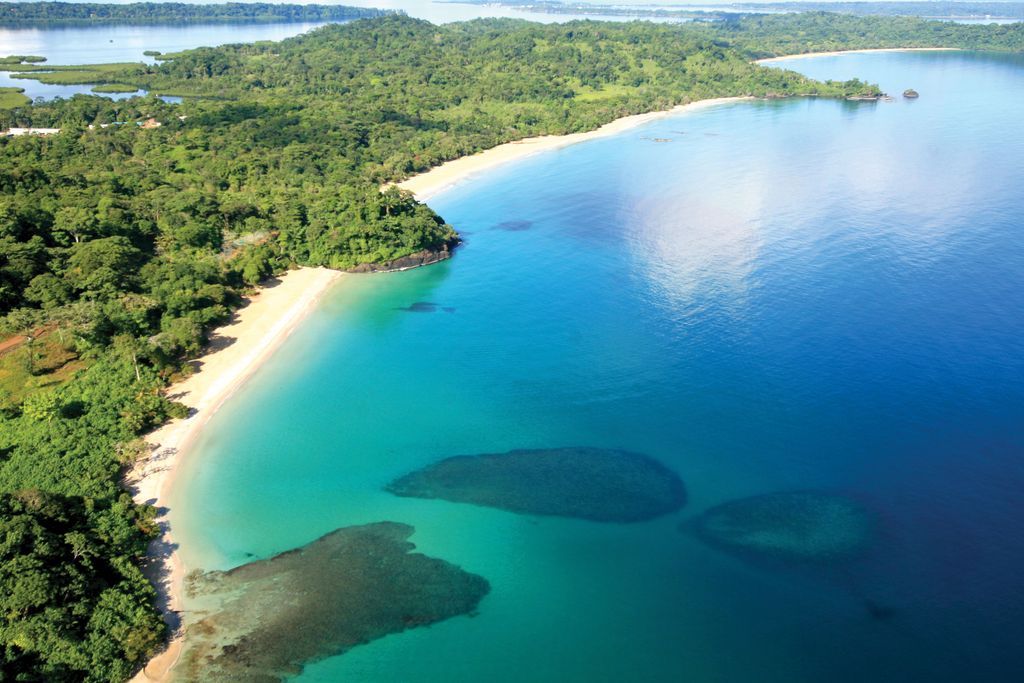
Moving beyond Europe, the concept of geoarbitrage opens up a wealth of opportunities in other stunning regions, including Central America. Panama, with its beautiful Caribbean beaches, charming mountain towns, and a vibrant cultural capital city, presents an enticing proposition for U.S. expats. While it might not be the absolute cheapest country on this list, it certainly boasts a plethora of advantages for those looking to stretch their dollars and enjoy a higher quality of life. Average monthly expenses for a single person can be well under $2,000, with a one-bedroom in the city center averaging $730 and a three-bedroom outside the city center at $826. Utilities are remarkably low at $86 per month, and internet at $44 per month.
Panama’s visa and residency programs are exceptionally friendly and welcoming for Americans and Canadians. For instance, individuals earning at least $1,000 per month in pension income can qualify for the accessible pensionado visa. Alternatively, through the friendly nations visa, Americans can gain residency by simply opening a bank account with $5,000 and securing a job in Panama, starting a business there, or investing in real estate worth at least $10,000. These pathways highlight the country’s proactive approach to welcoming foreign residents.
Climate-wise, Panama offers a sunny and tropical environment that is notably outside the hurricane belt, ensuring consistent pleasant weather. Its geographical proximity to the U.S. is another significant perk, with quick and easy flights from Panama City making visits home or receiving family and friends incredibly convenient. One of the most substantial financial advantages of living in Panama is that it does not impose taxes on money earned outside its borders. This means that whether you are a digital nomad working remotely for a U.S. company or a retiree receiving a foreign pension, you are exempt from income taxes in your adopted homeland, providing a massive boost to your disposable income.

Furthermore, the country’s health care spending, at $1,193 per person per year, falls below a fifth of America’s per-capita spending, according to OECD data, signifying access to affordable medical care. Panama uniquely uses the U.S. dollar as its currency, which, while convenient and eliminating exchange rate fluctuations, also means there are no exchange rate advantages to exploit. Even so, the overall cost of living is significantly lower than in the U.S., with the cost of living excluding rent being 31.7% cheaper, and rents a remarkable 58.5% cheaper.
The official language in Panama is Spanish, although a considerable percentage of the population, especially in more touristy areas, speaks English as well. For those genuinely considering a move, “Escape to Paradise” by Richard Detrich is an authentic and highly recommended resource. It offers a comprehensive firsthand account from a couple who successfully emigrated themselves, serving as mandatory reading for any Americans contemplating a move to Panama. This combination of natural beauty, financial advantages, and welcoming policies makes Panama an incredibly attractive option for a comfortable life abroad.
**Costa Rica: The “Switzerland of Central America”**
Just a short distance from Panama lies another Central American paradise, Costa Rica, which has become a beloved destination for U.S. expats. Often affectionately known as “the Switzerland of Central America,” Costa Rica has earned this moniker due to its renowned neutrality, high level of safety, robust banking system, and excellent health care. Its cost range, typically from $1,000 to $1,700 per month, makes it a highly attractive option. Rent for a one-bedroom in the city center averages $491 per month, while a three-bedroom outside the city center is around $619. Utilities are a low $63 per month, and internet is $46 per month.
Read more about: Italy Greenlights World’s Longest Suspension Bridge: A Bold Vision Meets Enduring Challenges of Mafia and Earthquakes
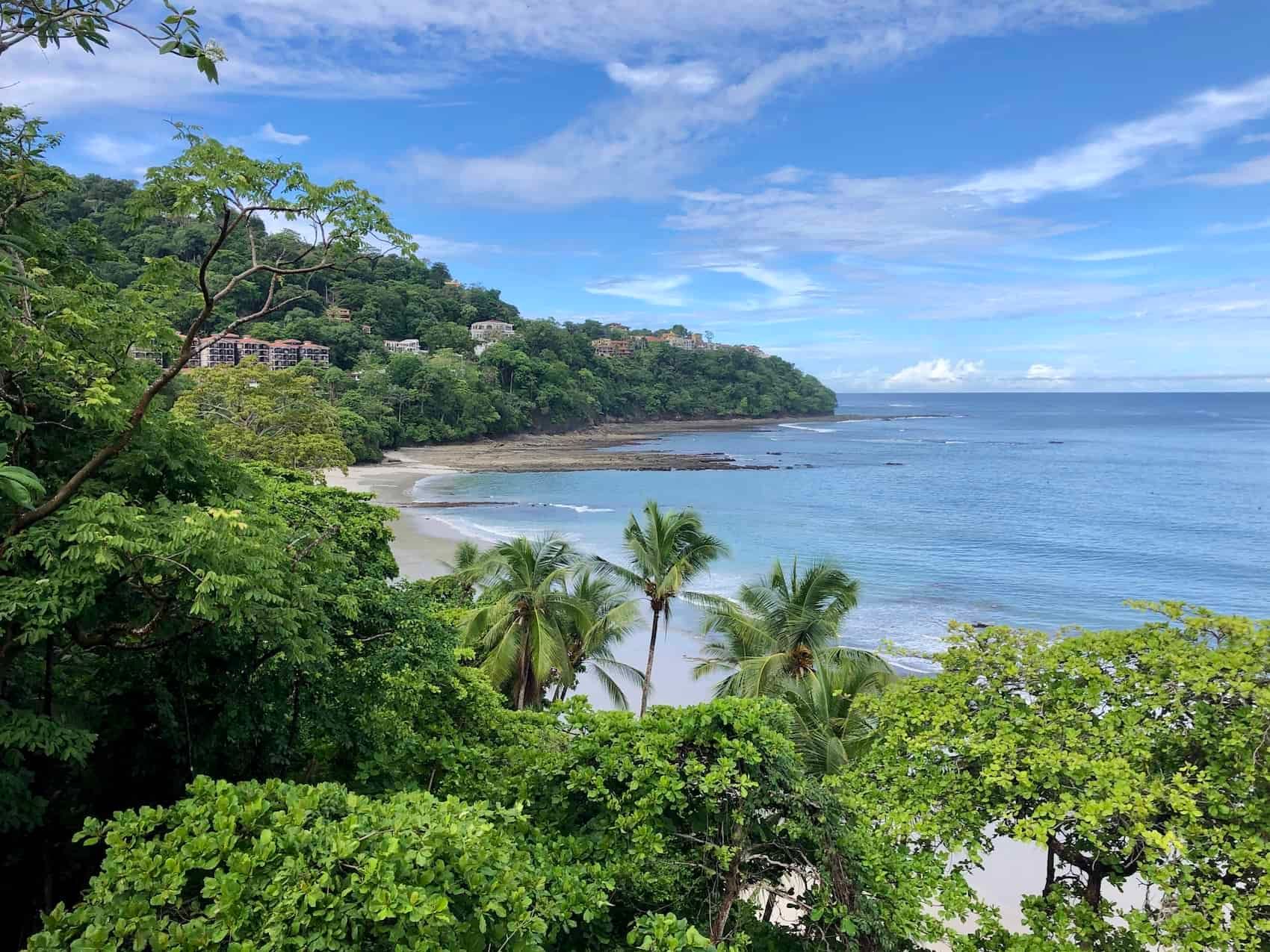
Like Panama, Costa Rica boasts a diverse range of climates and geography, from warm, inviting beaches to cooler, refreshing mountain towns. It is, without a doubt, an outdoor lover’s paradise, offering an abundance of exhilarating activities such as surfing, fishing, golfing, hiking, scuba diving, and outdoor yoga. This emphasis on an active lifestyle is perfectly encapsulated in Costa Rica’s national motto of “Pura Vida,” which translates to “pure life,” reflecting the country’s relaxed, appreciative, and joyful approach to living.
One of the standout features of Costa Rica is its public health care system, which charges a reasonable 7% to 11% of your reported household income. This fee grants access to high-quality health care services, making medical expenses significantly more manageable than in the U.S., where per-capita spending averages $12,318. Many expats cleverly combine this public health care coverage with occasional private payments when they desire expedited same-day service for specific treatments or tests. Notably, Costa Rica’s health care system mirrors Panama’s in its inclusion of a high percentage of U.S.-educated doctors and established partnerships with U.S. hospitals, ensuring a familiar standard of care.
Similar to Panama, Costa Rica offers another significant financial advantage: it charges no foreign income tax. This means that income earned from outside the country, such as from remote work or pensions, remains untaxed by the Costa Rican government, maximizing an expat’s financial freedom. The country’s Global Peace Index Score of 1.73 further underscores its reputation as a safe and stable environment for living abroad.
Prices in Costa Rica can vary, of course, depending on the specific city or town and whether you choose to stock up on inexpensive local vegetables from markets or opt for more imported, upscale goods like Russian caviar. However, on a nationwide scale, the cost of living, excluding rent, is a significant 37.5% lower than in the U.S., and rents are an astonishing 71.0% lower. This remarkable affordability, combined with its natural beauty, robust infrastructure, and welcoming culture, makes Costa Rica a compelling choice for Americans seeking a richer, more relaxed life on a budget. The book “Happier Than a Billionaire” by Nadine Hays Pisani offers an inspiring account of a couple who quit their jobs and moved to Costa Rica, embracing a zero-hour workweek, showcasing the possibilities that await.

Navigating the Global Landscape: Continued Destinations and Practical Considerations for a Successful Expat Life
The dream of a fulfilling, budget-friendly life abroad is a tangible reality, extending far beyond Europe. Geoarbitrage unlocks diverse countries offering unique advantages, stunning landscapes, and significantly lower costs. Let’s continue our exploration, discovering more havens where your budget can truly thrive.
Venturing into the Americas, **Panama** is an enticing proposition for U. S. expats. This Central American nation boasts beautiful Caribbean beaches, charming mountain towns, and a vibrant capital. While not the absolute cheapest, Panama offers substantial dollar-stretching advantages. Monthly expenses can be well under $2,000, with city-center one-bedrooms at $730 and outside three-bedrooms at $826.

Utilities are $86, internet $44. Panama’s visa programs are notably friendly, including the pensionado visa (for $1,000+/month pension) or the friendly nations visa (requiring $5,000 in a bank account and a job, business, or $10,000 real estate investment). The climate is sunny, tropical, and outside the hurricane belt, with close proximity to the U. S. A key financial perk: no taxes on foreign-earned income. Health care spending is less than a fifth of America’s ($1,193 per person annually).
Though using the U. S. dollar, the cost of living is 31. 7% cheaper excluding rent, and rents are 58. 5% cheaper. Spanish is official, but English is widely spoken in tourist areas.
Richard Detrich’s “Escape to Paradise” is a highly recommended resource.
A short distance from Panama lies **Costa Rica**, a beloved U. S. expat destination, known as “the Switzerland of Central America” for its neutrality, safety, robust banking, and excellent health care. Cost ranges from $1,000 to $1,700 monthly.

Rent for a city-center one-bedroom averages $491, a three-bedroom outside is $619. Utilities are $63, internet $46. Costa Rica offers diverse climates—beaches to mountains—and is an outdoor lover’s paradise, reflecting its “Pura Vida” motto. Its public health care charges 7% to 11% of household income for high-quality services, far more manageable than the U. S.
(many combine with private for expedited care). Like Panama, it has U. S. -educated doctors and no foreign income tax, maximizing financial freedom.
Its Global Peace Index Score of 1. 73 underlines its safety. While prices vary, overall cost of living (excluding rent) is 37. 5% lower than the U. S. and rents are an astonishing 71. 0% lower. Nadine Hays Pisani’s “Happier Than a Billionaire” offers inspiring insights.
Read more about: A Retirement Expert Reveals: 8 Global Havens That Outshine America for Your Golden Years

Crossing north, **Mexico** has become an expat mecca with stunning beaches, rich culture, colonial cities, low cost of living, easy U.S. access, and quality health care. Some cities like San Miguel de Allende, Guanajuato, and the Riviera Maya are particularly expat-friendly. Mexico offers two national health care plans; Seguro Popular is popular, costing expats only a few hundred dollars yearly. Note, residents pay income taxes on foreign earnings. Nationwide, the cost of living is 38.4% lower than in the U.S. (excluding rent), and rents are 73.4% lower. Russell Blake’s “Retirement Secrets of Mexico” is a comprehensive guide.
Further south, **Ecuador** presents another compelling Latin American option, with diverse climates from warm beaches to breezy mountains. Tens of thousands of Americans live here, particularly in expat hubs like Vilcabamba and Cuenca. These cities blend old-world colonial charm with modern conveniences and year-round perfect weather (e.g., Cuenca’s low to mid-70s). Ecuadorian people are famously friendly. Crucially, Ecuador charges no taxes on income earned from outside its borders. The overall cost of living is 49.9% lower than in the U.S. (excluding rent), with rents 78.8% lower. Terry Dean Roberts’ “Relocating to Ecuador: Eyes Wide Open” offers valuable insights.
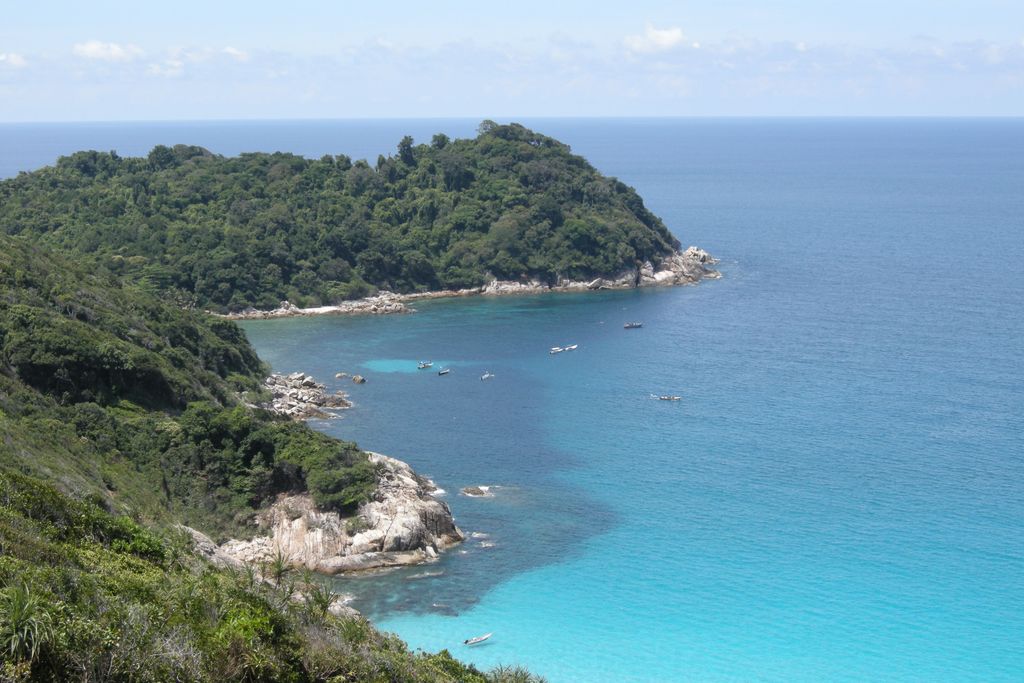
Shifting to Southeast Asia, **Malaysia** is a stunning yet affordable destination. With roughly 880 islands, it’s known for pristine beaches and rainforests for adventure. Its robust healthcare system is a medical tourism hotspot, offering high-quality care at about an eighth of U.S. prices. Significantly, Malaysia charges no income taxes on foreign-earned income. English is the unofficial language due to its British colonial past; Penang shows strong British influence and has a sizable expat presence. Though further from the U.S., its location is ideal for exploring Asia and Australia. Kuala Lumpur offers a modern city experience. The national cost of living is 51.9% cheaper than in the U.S. (excluding rent), with rents a staggering 79.4% lower.
Moving back to South America, **Colombia** has remarkably modernized, with plummeting crime rates. It’s one of the world’s most biodiverse countries, featuring clear waters, rainforests, and mountains. Cartagena is a popular beach city for expats, while Medellin offers luxurious mountain living. The “Coffee Triangle” (Pereira, Armenia, Manizales) provides similar experiences for less. Most Colombians speak Spanish, though English speakers are common in wealthier, touristy areas. Colombia’s modernized healthcare provides excellent, low-cost care (per-capita spending roughly a tenth of America’s). However, Colombia taxes worldwide income. Despite a Global Peace Index score worse than the U.S., the compelling affordability remains: cost of living is 62.4% lower (excluding rent), and rents are 82.2% lower.
Now, let’s circle back to Europe, where hidden gems and familiar favorites offer exceptional value. **Portugal** combines a low cost of living, warm weather, old-world culture, and a relaxed, safe lifestyle, ranking sixth-best globally in peace. While costs are higher than in Latin America, per-capita healthcare spending is still below a third of the U.S. For a Western European lifestyle, Portugal is enticing, with many English speakers. However, it taxes worldwide income. Lisbon, Porto, and the expat-heavy Algarve are popular urban choices, while Ericeira, Cascais, or Mafra offer charming coastal or rural living. The cost of living is 40.0% cheaper than in the U.S. (excluding rent), and rents are 47.7% lower.
Read more about: Where Did Travelers Fall In Love? Unforgettable Destinations Revealed

Continuing our global exploration, **Thailand** offers a unique, authentic feel, never colonized by Europe. The Thai people are warm and welcoming, with a thriving expat community. The climate is consistently warm and tropical. Costs are remarkably low, and its modern healthcare is one-fifteenth of U.S. per-capita spending. Expats choose from vibrant Bangkok, historic Chiang Mai, or beach destinations like Hua Hin. Thailand taxes overseas income. Cheap internal flights and its excellent Asian/Australian hub status add appeal. Overall, Thailand’s cost of living is 44.9% cheaper than in the U.S. (excluding rent), and rents are 72.8% cheaper.
Revisiting Southern Europe, **Spain** offers more than just beaches. Its climate is varied and pleasant—south is hot/dry, north mild, mountains for skiing. An extensive, efficient rail system means less need for a car. As a fully developed Western democracy, Spain provides all first-world amenities, including affordable, high-quality public healthcare (around a third of U.S. spending). While pricier than some expat options, Spain is an excellent choice for a vibrant European lifestyle with substantial U.S. savings. Spain taxes residents on foreign income. Affordable, culturally rich cities include Jerez, Vitoria-Gasteiz, and Pamplona. The cost of living, excluding rent, is 32.2% cheaper than in the U.S., and rents are 54.7% lower.
Finally, the alluring charm of **Italy**, the home of “la dolce vita” (the sweet life), offers a laid-back lifestyle, rich culture, renowned cuisine, and surprising affordability—especially outside major tourist areas. The American visa process is among Europe’s easiest, partly due to Italy’s efforts to combat declining population; citizenship by descent is also possible. Utilities average $173, internet $29, and a midrange dinner for two $61. Rent for a city-center one-bedroom is around $691, a three-bedroom outside $945. Italy’s Global Peace Index score of 1.64 underlines its safety.
Read more about: Is Your Dream Vacation Spot Still a Paradise? Over-Tourism Changes Popular Destinations

Read more about: A Retirement Expert Reveals: 8 Global Havens That Outshine America for Your Golden Years
Embarking on an expat journey offers a chance to redefine your lifestyle and financial reality. From Europe to Central America and Southeast Asia, a comfortable and enriching life on a budget is increasingly accessible. Key to success is thorough research: understanding each country’s cost of living, healthcare, safety, and tax implications. While learning the local language is rewarding, many expat communities ease the transition for English speakers. Utilizing specific country resources and official visa guides is crucial for navigating legal residency. With diligent planning and an adventurous spirit, the world truly opens up, inviting you to discover a life far richer than imagined, all within your budget.


